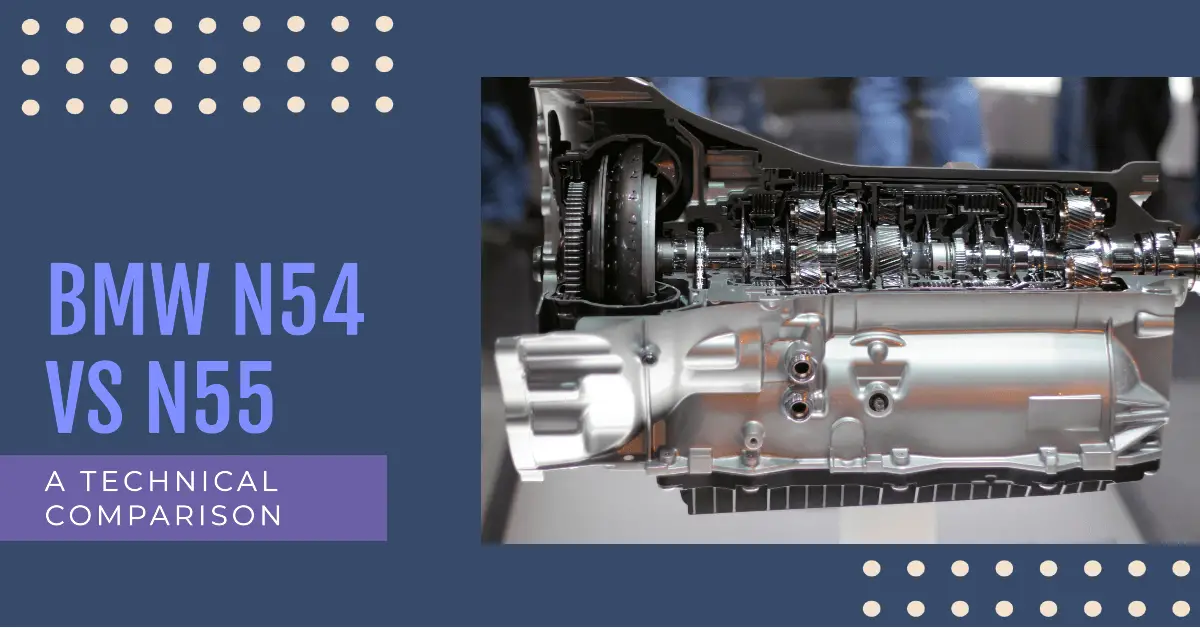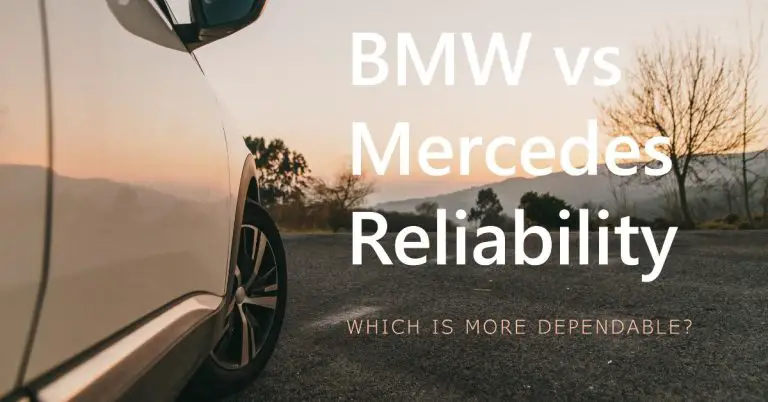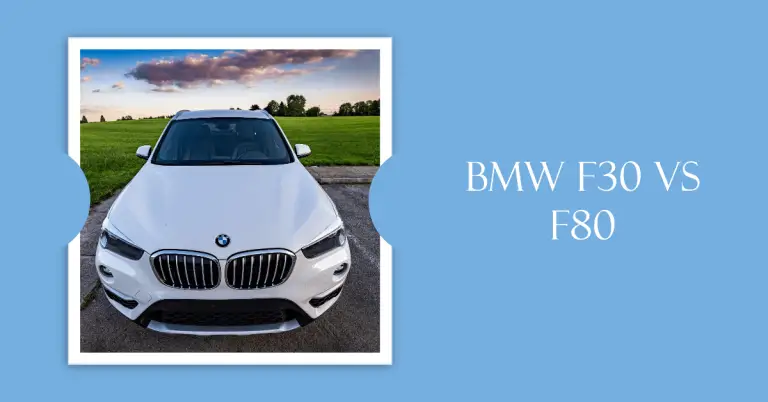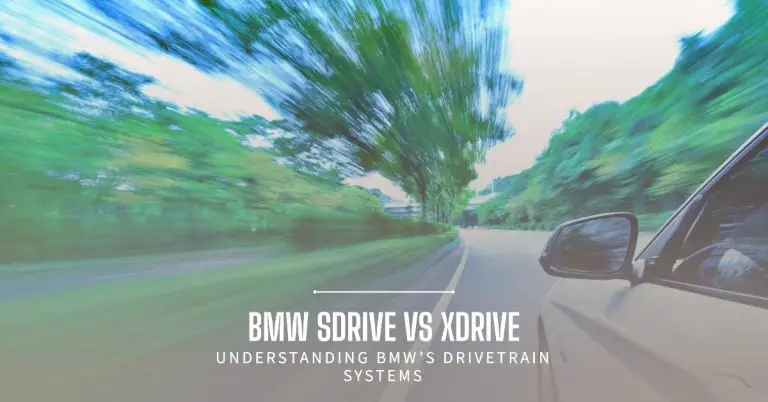BMW N54 vs N55: Which Twin Turbo Engine is Better?
If you’re looking at picking up a used BMW 335i, 135i, or 535i from 2007 to 2013, you’ll have a choice between two excellent twin-scroll turbocharged engines: the N54 and the N55. At first glance, these 3.0L straight 6 motors seem very similar. But when you dig into the details, there are some key differences in terms of performance, tuning, reliability and more.
So which one is better, the N54 or N55?
The N54 typically makes more power modified and has way more tuning potential, but the N55 fixed a lot of the reliability issues and is easier to own and work on.
This guide will compare the BMW N54 and N55 in all the ways that matter so you can decide which of these epic turbo motors fits your needs.
Overview of the N54 and N55
First, let’s look at the background of BMW’s transition from the N54 to the N55:
- The N54 was launched in 2006 and powered BMW performance models from 2007 to 2013.
- In 2009, the upgraded N55 replaced the N54. It featured incremental design changes to improve reliability and efficiency.
- The N55 continued powering BMWs until they switched to the B58 in 2016.
During 2007-2013 when they overlapped, you could get the N54 in the 335i, 135i, and 535i. The N55 came in the 335i, 335is, and 535i.
Now let’s compare the tech specs and designs:
Key Specs and Design of the N54 vs N55
While the N54 and N55 share the same 3.0L twin-scroll turbo I6 layout, let’s look at some of the hardware differences:
- Turbochargers: The N54 uses two smaller turbochargers while the N55 uses a single, larger twin-scroll turbo. This reduced turbo lag.
- Fuel Injection: The N54 has port injection while the N55 gets direct injection for improved efficiency and power.
- Engine Internals: The N55 has a strengthened block, crankshaft, and pistons. The head also has modified valves and camshaft.
- Oiling System: Upgraded oil pan and galleys in the N55 block improve oil delivery during high loads.
- Intercooler: Larger front-mount intercooler on the N55 keeps intake air cooler.
- Exhaust Manifolds: Redesigned exhaust manifold reduces restriction compared to the N54.
So in summary, the move from the N54 to N55 brought incremental design improvements to both the power and reliability of the motor.
Stock Performance and Power
Before modifying anything, let’s see how the stock N54 and N55 compare in terms of horsepower, torque, and acceleration:
- Horsepower: The N54 makes 300-335 hp while the N55 is rated at 300-320 hp.
- Torque: Both motors put down at least 300 lb-ft of torque. The N55 may produce slightly less torque at lower RPMs.
- 0-60 MPH Acceleration: Expect low 5-second 0-60 times from both engines – a few ticks faster in the 335i/335is models. The N55 may be 0.1-0.2 seconds slower from the reduced torque output.
- Quarter Mile: Stock quarter mile runs are in the mid-13 second range for both engines. Again, the N55’s times may be a bit slower.
So in stock form, the N54 generally makes a bit more power across the RPM band thanks to the twin turbos. But real-world acceleration is still blisteringly quick with both engines.
Tuning Potential and Modding
This is where the biggest differences emerge between the N54 and N55 – their potential for tuning and handling mods.
N54 Tuning
The N54 is an overachiever that responds extremely well to mods and ECU tuning:
- 500-600 hp: With just bolt-ons like a downpipe, intake, intercooler and ECU tune, the N54 can make over 100 hp more than stock.
- 700+ hp: With upgraded turbos, fueling, and tuning, 600+ whp is achievable. The N54 tops out around 700-800 hp on stock internals.
- Handling: The N54 also benefits a lot from suspension, sway bar, and chassis upgrades. The engine loves to be pushed hard.
So while expensive, the N54 can achieve supercar-rivaling horsepower figures with supporting mods. Its limits are very high.
N55 Tuning
The N55 is no slouch, but doesn’t have quite the immense tunability of the N54:
- 350-400 hp: Basic bolt-ons and a tune safely deliver 75-100 additional hp up to about 375 whp.
- 500 hp: To hit 500 hp, the N55 needs upgraded or hybrid turbos, methanol injection, and custom tuning. This is near the limit for the stock engine.
- Handling: Like the N54, the N55 also benefits from suspension, brake, and chassis components to improve handling and control in turns.
So the N55 still has plenty of tuning potential. But hitting 500+ hp takes a lot more specialized modifications and money compared to the N54.
Reliability and Maintenance
For most owners, reliability and maintenance costs are just as important as power. Here’s how the two engines compare in this regard:
N54 Common Problems
The N54 is notorious for certain weak points and issues that require repair:
- Turbo failures: The small N54 turbos can fail prematurely and send metal fragments into the engine.
- Wastegate rattle: A common problem caused by failing wastegate actuators. Can lead to boost leaks.
- Carbon buildup: Port injection, especially with direct injection engines, causes carbon buildup on intake valves that affects performance over time.
- HPFP failures: The high pressure fuel pump is prone to failure with the N54.
- Oil leaks: Multiple seals and gaskets can leak or fail. The oil filter housing gasket is a common offender.
So while the N54 makes great power, it definitely presents more maintenance challenges and surprise repair costs.
N55 Improvements
The N55 fixed many of the N54’s weak points through improved design:
- Robust turbo: The single twin-scroll turbo is more durable and reliable than the N54’s smaller twin turbos.
- Reduced carbon buildup: Direct injection and upgraded fuel pump create a cleaner burn and less buildup issues.
- Improved oil and cooling systems: Redesigned oil pan, galleys, and cooling reduce stress on the engine during heavy loads.
- Sturdier internals: The stronger block, crank, and internals handle more abuse and power.
So overall, the N55 really helped resolve the N54’s biggest problem areas and is more hassle-free to own long-term.
Cost and Availability
The N54 and N55 engines have different demand profiles among BMW enthusiasts:
N54 Cost and Supply
- Used N54s often command higher resale prices due to their tuning potential.
- Repair parts are readily available, but can be expensive for complex jobs.
- Upgraded fueling and turbo kits run $5-8k before install costs.
- N54 specialists are in high demand for big horsepower builds.
So while more expensive, the N54 has a vibrant aftermarket and specialty tuning shops that can achieve huge power.
N55 Cost and Supply
- The N55 is more common since it was mass produced longer. You can usually find them cheaper than N54s.
- Repairs are less frequent. But some parts unique to the N55 can be harder to source new.
- Bolt-ons and tunes run $2-4k for easy, moderate power gains.
- Any serious tuning requires custom turbo and fueling upgrades since fewer off-the-shelf options exist.
The N55 strikes a nice balance of performance and lower ownership cost, but lacks the N54’s immense off-the-shelf tuning support.
Conclusion: N54 or N55?
So should you go for an N54 or N55 powered BMW? Here’s a quick summary:
- N54 for Enthusiasts: If you plan to tune and modify for maximum power, the N54 is hard to beat. This engine begs to be pushed to the limit.
- N55 for Daily Driving: For a responsive daily driver, the N55 pulls strong when you want it with less drama and surprises down the road.
- 335is for Best of Both: The E92 BMW 335is coupe gives you an overachieving N54 engine in a more refined N55-esque package. It’s a legend.
The N54 N55 rivalry comes down to priorities – tuned performance versus daily driving virtues like reliability and cost. Either of BMW’s brilliant twin-turbo straight 6 engines offer an unforgettable driving experience.







